Sadly a DECRA can only purchase up to 1/3rd of a house in Sydney, let alone a giant radio telescope…
03.09.2025 09:07 — 👍 1 🔁 0 💬 1 📌 0
Or just refurbished the one already there!
03.09.2025 03:29 — 👍 1 🔁 0 💬 1 📌 0
Does the telescope actually come with the land? And the buyer could (in theory) do whatever they want with the telescope?
03.09.2025 03:28 — 👍 0 🔁 0 💬 1 📌 0
Could tell the antennas were all pointed at the same spot and that data was streaming easily enough!
01.09.2025 14:03 — 👍 1 🔁 0 💬 0 📌 0
There was indeed a large cat. But only a single antenna…
01.09.2025 02:41 — 👍 1 🔁 0 💬 1 📌 0

Image of a computer screen filled with windows that show various telescope diagnostics and pictures of where they are pointed.
What babysitting a telescope the size of Australia looks like #RadioAstronomy
31.08.2025 09:10 — 👍 70 🔁 9 💬 4 📌 0
An institute or grant not budgeting for APCs is apparently a legitimate reason to ask RAS for a fee waiver!
I asked for one during a brief period between MNRAS going gold open access and my institution making a deal with them, and it was granted
27.08.2025 12:15 — 👍 1 🔁 0 💬 0 📌 0
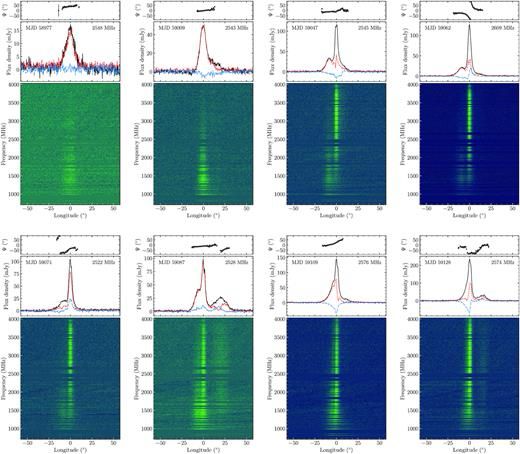
The dynamic magnetosphere of Swift J1818.0–1607
ABSTRACT. Radio-loud magnetars display a wide variety of radio-pulse phenomenology seldom seen among the population of rotation-powered pulsars. Spectropol
Some neutron stars have extremely powerful magnetic field and do all sorts of whacky things. Like emitting beams fast radio bursts 💥
Or behave in totally unexpected ways: doi.org/10.1093/mnra...
And imprint their magnetic fields on the emitted radio waves: doi.org/10.1038/s415...
19.08.2025 12:28 — 👍 1 🔁 0 💬 1 📌 0
There’s also a unique “double pulsar” that has provided an extremely powerful tool for testing relativity: www.aanda.org/articles/aa/...
And teaching us about what goes on in the magnetic fields of neutron stars: doi.org/10.1093/mnra...
19.08.2025 12:28 — 👍 1 🔁 0 💬 1 📌 0

The impact of glitches on young pulsar rotational evolution
ABSTRACT. We report on a timing programme of 74 young pulsars that have been observed by the Parkes 64-m radio telescope over the past decade. Using modern
By carefully tracking the rotation rates of 100’s of pulsars, we’ve been able to peer into their insides: doi.org/10.1093/mnra...
And realise that both the rate at which their spins slow down and emit radio waves are A LOT more variable than once thought: doi.org/10.1093/mnra...
19.08.2025 12:28 — 👍 1 🔁 0 💬 1 📌 0
Apparently it’s #NeutronStarWeek, i.e the things I study for my day (and sometimes night) job!
More accurately I look at pulsars, which are neutron stars that are doing interesting things. Like emitting beams of radio waves from above their magnetic poles.
#Astronomy #RadioAstronomy
19.08.2025 12:28 — 👍 22 🔁 4 💬 2 📌 0
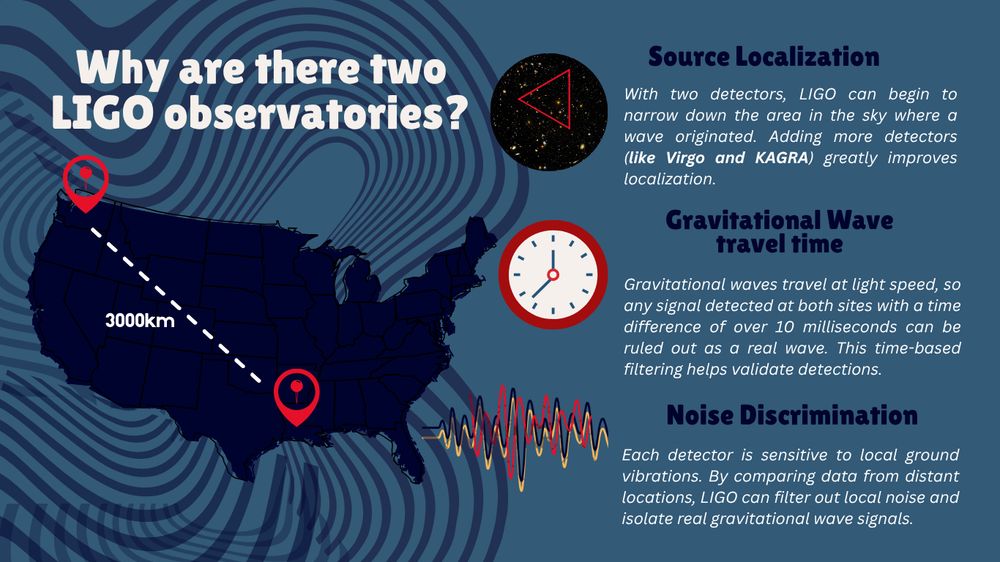
An infographic titled "Why are there two LIGO observatories?" features a map of the United States showing two LIGO locations separated by 3000 km. Three key reasons are illustrated on the right: Noise Discrimination: Each detector is sensitive to local ground vibrations. If both were close together, they’d pick up the same environmental noise, making it difficult to distinguish true gravitational waves. By comparing data from distant locations, LIGO can filter out local noise and isolate real gravitational wave signals.
Signal Timing: Gravitational waves travel at the speed of light, so any signal detected at both sites with a time difference of over 10 milliseconds can be ruled out as a real wave. This time-based filtering helps validate detections.
Source Localization: With two detectors, LIGO can begin to narrow down the area in the sky where a wave originated. Adding more detectors (like Virgo in Italy) greatly improves localization. This was crucial during the 2017 detection of a neutron star collision, where combined data allowed astronomers to quickly identify the galaxy that emitted both gravitational and electromagnetic signals, leading to the most observed astronomical event in history.
Why are there two LIGO observatories?
LIGO has two detectors ~3000 km apart for three main reasons:
🎧 Noise discrimination
⏰ Signal timing
🗺️ Source localization
Find out more www.ligo.caltech.edu/page/ligo-de...
Graphic by Mayara Pacheco 🔭🧪
24.06.2025 13:43 — 👍 50 🔁 24 💬 2 📌 3
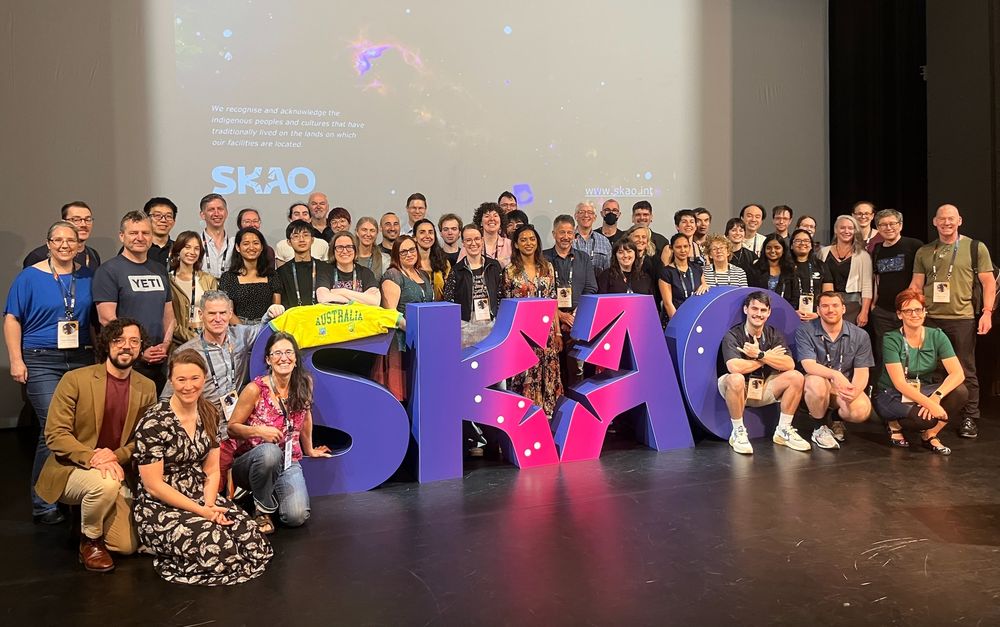
Picture of a large group of Australian radio astronomers on the stage at the SKAO 2025 meeting.
Incredible showing from Australians past, present and future, at #SKAO2025 in Görlitz.
All very excited about getting the first data from the SKAO telescopes!
Aussie, Aussie, Aussie!
#RadioAstronomy
20.06.2025 09:14 — 👍 22 🔁 3 💬 0 📌 1
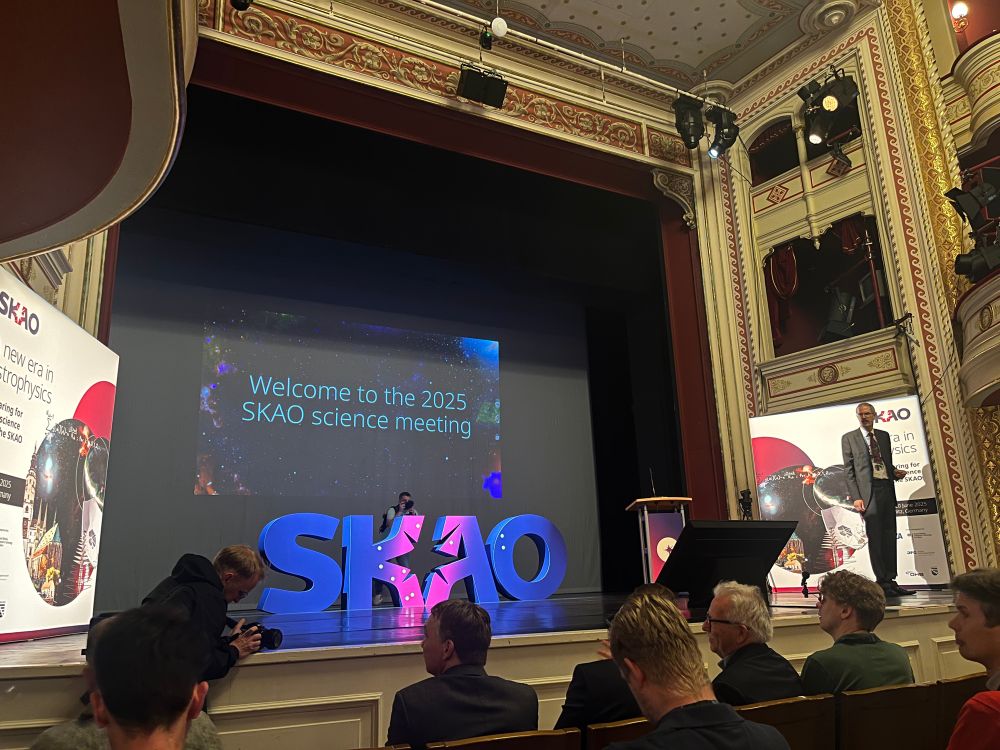

One of the more interesting conference venues!
#SKAO2025 #RadioAstronomy
16.06.2025 07:31 — 👍 16 🔁 0 💬 0 📌 0

Even managed to find some (VERY) good coffee! ☕️
15.06.2025 15:36 — 👍 2 🔁 0 💬 0 📌 0
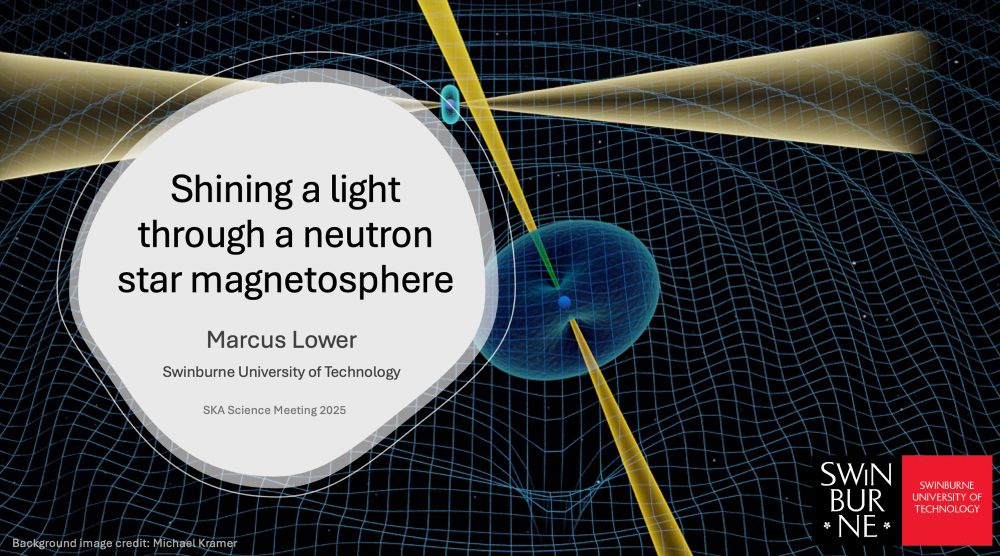
Title slide for a presentation. Background shows two pulsars surrounded by donut-shaped magnetic fields with beams of light emanating from above their magnetic poles. A distorted grid with ripples radiating away from the pulsars is shown behind them. Title text says “Shining a light through a neutron star magnetosphere”.
Sneak preview of what I’ll be talking about at the upcoming SKA Science Meeting in sunny Görlitz next week!!
#RadioAstronomy #DoublePulsarIsTheBestPulsar
12.06.2025 12:53 — 👍 13 🔁 3 💬 0 📌 0
Burn it with (pulsar) fire!!
03.06.2025 11:34 — 👍 2 🔁 0 💬 1 📌 0

A plain croissant sitting on a white ceramic plate, next to a cup of filter coffee

A cup of filter coffee with a card explaining the kind of beans used to make it. Card says “Uganda Wine Process — Single origin, Ethiopia / Anaerobic natural guji, uraga, oromia — Winey, berry candied fruits, chocolate
Coffee days ☕️
24.05.2025 03:31 — 👍 2 🔁 0 💬 0 📌 0
Wasn’t Sputnik 2 the first all-canine spaceflight…?
22.05.2025 03:17 — 👍 1 🔁 0 💬 1 📌 0
We’ve looked with Murriyang (the 64-m Parkes radio telescope) at 8-9 GHz, and still didn’t see any pulses from the object in the Snake. SKA-Mid should detect or rule out pulsed emission when it comes online in ~3-5 years.
18.05.2025 12:46 — 👍 2 🔁 0 💬 0 📌 0
Not-so fun fact: we looked *really* hard for pulses from the alleged pulsar in the Snake, and didn’t find any…
BUT we did find a millisecond pulsar embedded in different filament right next door! ☄️🔭
iopscience.iop.org/article/10.3...
17.05.2025 04:54 — 👍 30 🔁 1 💬 0 📌 1
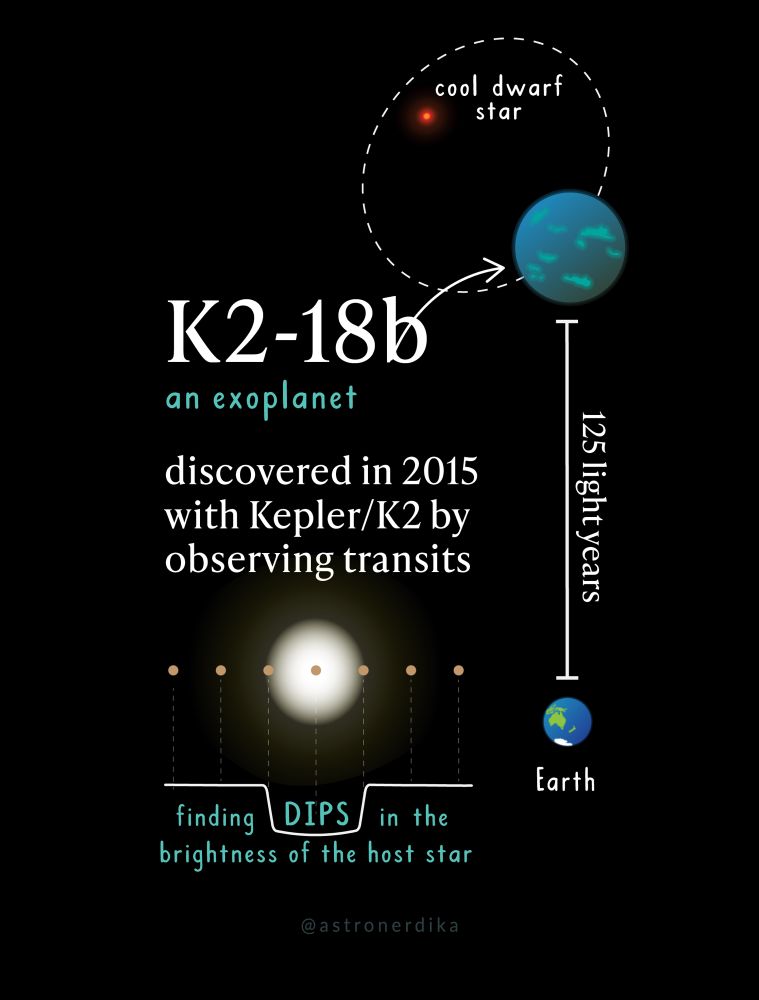
Infographic about the exoplanet K2-18b and its discovery with Kepler
So I know folks have heard the news about an exoplanet that might be “teeming with life”? 🌱
I created a series of infographics that aims to cover the key points of the research findings + some of the area where scientists are sceptical! 🧐
Meet K2-18b! 👋
#astronomy #exoplanet #scicomm
23.04.2025 01:43 — 👍 165 🔁 45 💬 15 📌 7
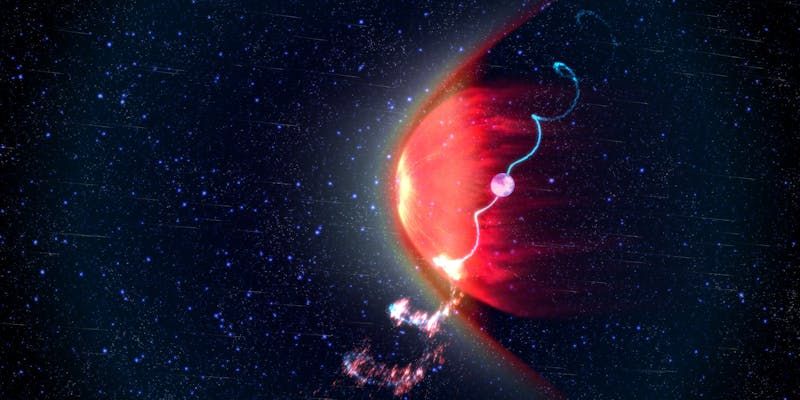
Twinkling star reveals the shocking secrets of turbulent plasma in our cosmic neighbourhood
For the first time, astronomers have measured the plasma layers of a shock wave surrounding a pulsar.
21.04.2025 09:59 — 👍 14 🔁 4 💬 1 📌 1
Go work at the most beautiful telescope in the world!
I’d seriously consider applying myself if I hadn’t just started a fellowship…
17.04.2025 10:37 — 👍 4 🔁 0 💬 0 📌 0
Hmm, that’s disappointing. And kinda strange that a standard interface to big template banks doesn’t exist…
12.04.2025 10:28 — 👍 1 🔁 0 💬 0 📌 0
Question to any stellar spectroscopy people on here: when you report that a star is of a particular spectral class based on a template bank, what did you actually do to figure that out??
Is it all just vibes and eyeballing things? Or is there a standard tool that nobody references? 🔭☄️
11.04.2025 09:59 — 👍 4 🔁 0 💬 2 📌 0
Some of them are perhaps “young at heart” as opposed to genuinely young pulsars 😄
09.04.2025 12:15 — 👍 0 🔁 0 💬 1 📌 0
ASTRON | Kapteyn Institute | Astronomy PhD student | she/her
Official account of the LIGO Scientific Collaboration. We detect gravitational waves!
Email: questions@ligo.org
Nature needs us, now
www.acf.org.au
🌏 Replace coal & gas with renewables
🦷 Dental & mental health in Medicare
🏡 A home you can afford
https://linktr.ee/greens
https://greens.org.au
Authorised by G Burden, The Greens, Canberra ACT 2601
A three-dimensional being
My book: https://tibees.com/
Masters Student @ Macquarie University aspiring to use galactic research to answer the big cosmological questions. 🌌🪐💫 Keeping well read and caffeinated. 📚☕
jaydewillingham.github.io
Senior Lecturer at the University of Sydney. Radio astronomer hunting for fleeting bursts of energy across the Universe.
Amateur Astronomer & Comet Discoverer
Would be House Renovator
Dabbler of Photography
Like Mountain walks
IT when I feel like it
Astrophysicist. PI of SOHO/LASCO & Sungrazer Project, studying mostly comets, asteroids, Sun and misc heliophysics stuff. Personal account; all opinions mine.
Astronomer, Monash academic, Conversation writer, cycling commuter or mamil.
https://research.monash.edu/en/persons/michael-brown
Astrophysicist and High Jumper.
https://orcid.org/0000-0003-4351-993X
Assistant Scientist at Green Bank Observatory, radio astronomer, studies radio galaxies and galaxy clusters, triathlete, traveler.
https://www.emilymoravec.com
Postdoctoral Research Fellow in planetary geology and cosmochemistry at Monash University // fibre artist // she/her
fibreandspace.com
Pulsar and FRB astronomer | Professor at Swinburne University of Technology | MeerKAT and Murriyang Pulsar Timing / ASKAP FRB searching | he/him
ASTRON is the Netherlands Institute for Radio Astronomy. Our mission is to make discoveries in radio astronomy happen. We develop new and innovative technologies, operate world-class radio astronomy facilities, and pursue fundamental astronomical research.
Astro | Helio | Space Weather | ML
Science Director, Space & Astronomy @CSIRO; OMO
















